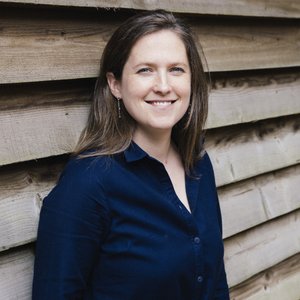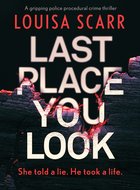Post-it Notes, Planning and Plotting: Finding the Method in the Madness of Writing a Novel
 Louisa Scarr
Louisa Scarr
I am currently two weeks into writing a new novel, at the juxtaposition where my vision of the masterpiece is the furthest possible point from the jumble of words on my screen. I know the story (kind of). I know the twists and turns (ish). But getting to a finished novel? Well. It feels insurmountable. It’s only knowing I have been here before and come out the other side that keeps me going.
So, where does it all begin? How does a tangle of thoughts and ideas and scraps of paper turn into a finished product?
Here’s what works for me.
- Start with the who.
In the middle of lockdown 2020, I started work on a sliding doors-style love story. It was terrible. Turns out, I can’t write love stories. But those 50,000 words weren’t a waste of my time – the two main characters turned out to be Robin Butler and Freya West. Six months later they were inserted into a police procedural called Last Place You Look, and they just… worked. And thanks to those 50k words, I knew who they were from the beginning.
Because therein lies my main battle. Who are the characters in this story? These people need to feel real to me; with their own views and options and actions, and who sometimes take the story in ways I hadn’t planned. I always know what they look like: I look for a leading man who most resembles the person in my head, then mainline their entire back catalogue on Netflix. (I’m telling you, this job is hard.) I look for their mannerisms: how they frown, smile, laugh. These are the details that make them come alive in my head: the start of my excitement for a books.
- Write. Anything.
I never have a fully formed story when I start. I have an outline, a hook. Maybe a few scenes and conversations between the characters. But normally, that’s it. I just start work putting words on a page. And the story flows from there.
Getting started creates avenues I hadn’t imagined. The characters think, talk, play – and twists arise as we go. Sometimes I go back and add thoughts or changes, but generally it’s about moving forwards. Getting to the end.
I think visually, so I imagine the story as a film. With credits and a soundtrack. Every chapter is a scene, every look a camera angle. And I try to capture that, piece by piece.
Sometimes (usually) it’s awful. Stunted prose, repeating sentences and everyone shrugging, frowning and muttering all the damn time. Doesn’t matter. Words on a page. The editing comes later.
- Now, bring out the Post-its.
 Or, in my case, index cards. Every card is a chapter, different colours representing the character holding the point of view. I write a quick overview on each one then stick them up in order. And this is when it all starts to come together.
Or, in my case, index cards. Every card is a chapter, different colours representing the character holding the point of view. I write a quick overview on each one then stick them up in order. And this is when it all starts to come together.
Through writing the messy-not-even-first draft, I now have an idea of what the story is. So now I can plan it properly. I write down each clue, twist or reveal on a sticky note, and plot them out across the chapters. Again, different colours for different threads. For example, in Last Place You Look, the main crime was pink, Robin’s secret was yellow, and Freya’s story was orange. I move chapters around and add new where a character seems to be lacking. I work out the main structure of the novel, including where the turns are, and where the midpoint reversal hits and a reveal means the story reaches a turning point.
Seeing it all laid out as a whole, visually, in front of me, helps me get a full picture. Is part one too short? Is the ending too fast? Does one character dominate for too long, or are the clues all bunched up in one chapter? Only by seeing it like this, do I really get a feel for the beat of the story.
Last Place You Look, plotted.
- Fill in the gaps.
This is where I do the research. There is normally detailed technical information I have glossed over, or some medical jargon I have made up, so it’s time to do the reading. But why not before? I find it too distracting. If I know too much, I’ll try to insert all my pointless, albeit fascinating, knowledge into the book, and nobody wants two boring pages on the effects of fire on a dead body.
- And edit, edit, edit.
Nobody gets it right first time. At least, I certainly don’t. Lisa Cron, in her book Wired for Story, talks about just trying to make each draft a little bit better than it was before, and that’s what I do.
Chapter by chapter, I’ll painstakingly go through correcting my mistakes, improving the language. Making sure every piece of evidence is in the right place and every character reacts to it in the right way. I’ll read it aloud and check how the sentences sound. (Boring, but vital.) I’ll run searches for my frequently used words (all that shrugging and frowning.) And I’ll check that my swearing hasn’t got too out of hand.
And once I’m happy, heart in my mouth, off it’ll go to my editor. I know she’ll suggest some changes, point out the gaping plot holes I’ve missed, the inconsistencies in the story, and the whole process will start again.
But at least, for that brief moment after I’ve pressed send, it’s perfect.
Further Reading:
- Save the Cat, by Blake Snyder. An excellent, blow-by-blow guide to plotting. Written for screenplays but oh-so applicable for novels. (And there is a novel-version, by Jessica Brody.)
- Wired for Story, by Lisa Cron. Simple and clear, with checklists on all of the main aspects of writing a novel.
- Into the Woods, by John Yorke
- The Science of Storytelling, by Will Storr.
And because everyone should know how to use a semi-colon and an apostrophe: Eats, Shoots and Leaves, by Lynne Truss.
—
Louisa Scarr studied Psychology at the University of Southampton and has lived in and around the city ever since. She works as a freelance copywriter and editor, and when she’s not writing, she can be found pounding the streets in running shoes or swimming in muddy lakes.
LAST PLACE YOU LOOK
 When does a secret become a crime?
When does a secret become a crime?
Jonathan Miller and his wife are invited to his best friend’s lavish 40th birthday celebrations. Four days later, Jonathan is dead, apparently asphyxiated during a solitary sex act gone wrong. A tragic case of misadventure.
DS Robin Butler is accompanied by his new partner DC Freya West to notify the widow. He can’t understand why West behaves like a nervous rookie. He doesn’t know that the victim was West’s lover, and until that moment she had no idea he was dead.
West is devastated and confused. Jonathan’s wife hints that he was troubled, and West chooses to withhold her connection to him. If it came out it would end her career. Yet she cannot accept any version of events other than murder. His wife, she is sure, is lying.
As the pair investigate, Butler’s past and present also collide. When the truth is finally revealed, there is no mistaking who the guilty parties are. But can they trust each other with their darkest secrets? And how can justice be served when the laws that were broken go unnoticed?
Don’t miss this tense and compulsive first novel in a brand new police procedural series. Perfect for fans of Cara Hunter, Susie Steiner and Jane Casey.
BUY HERE
Category: Contemporary Women Writers, How To and Tips
























